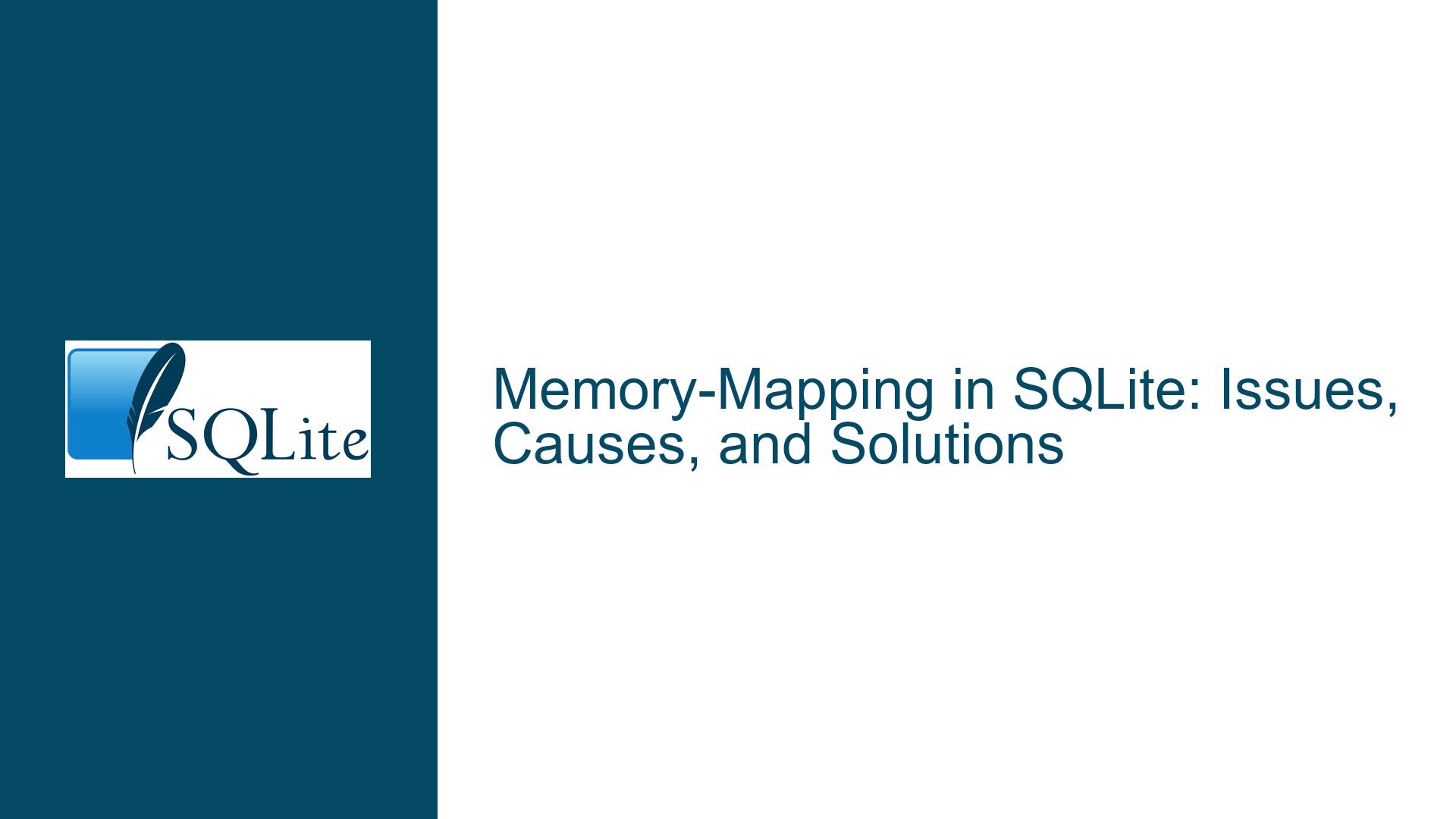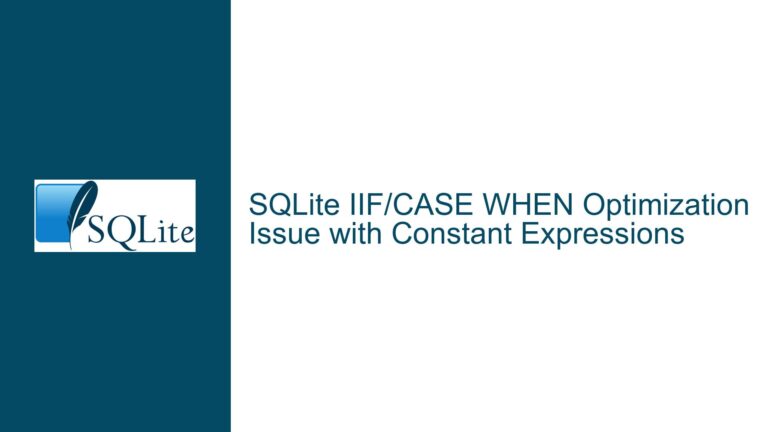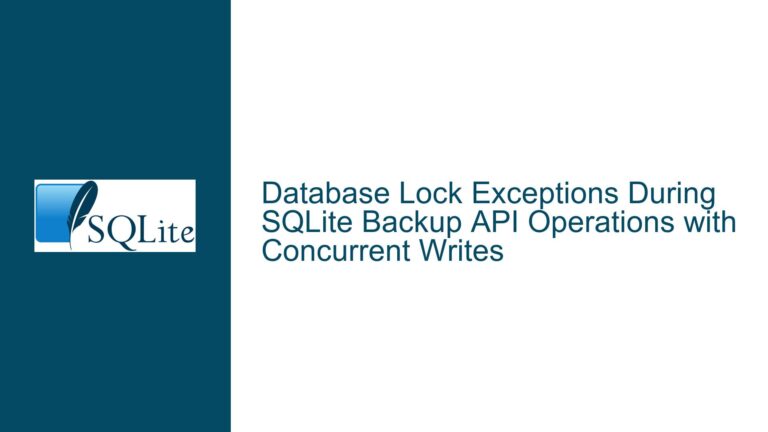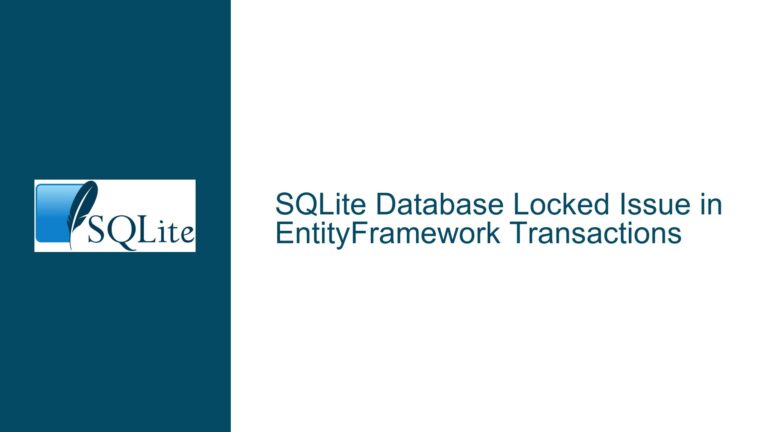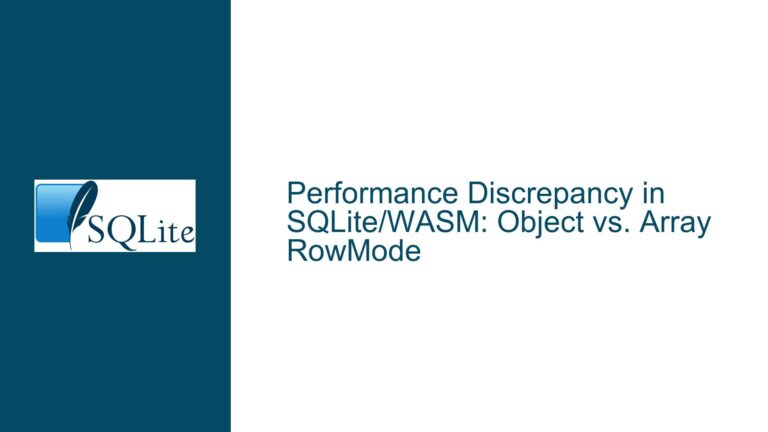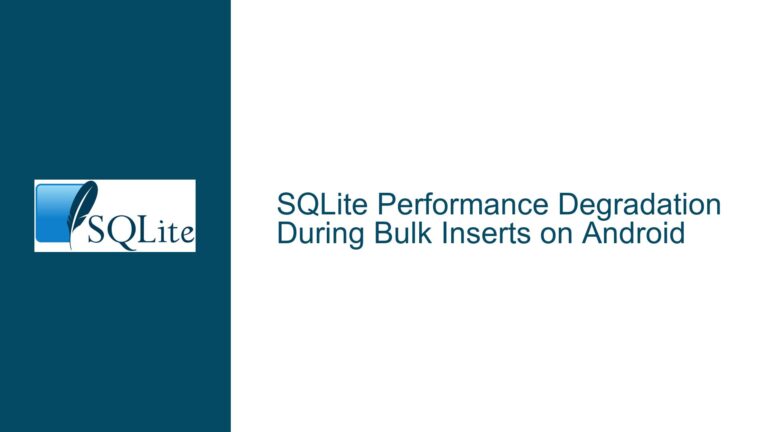Memory-Mapping in SQLite: Issues, Causes, and Solutions
Memory-Mapping in SQLite: Advantages, Disadvantages, and Integration with WAL Mode
Memory-mapping is a powerful feature in SQLite that allows the database to map file contents directly into the process’s address space, enabling faster data access by bypassing traditional file I/O operations. However, its implementation is not without challenges, particularly when integrated with SQLite’s Write-Ahead Logging (WAL) mode. Memory-mapping can lead to performance degradation, data integrity issues, and unexpected behavior if not configured or used correctly. This post delves into the intricacies of memory-mapping in SQLite, exploring its advantages, disadvantages, and the specific challenges that arise when combined with WAL mode. By understanding these nuances, developers can make informed decisions about when and how to use memory-mapping effectively.
The primary advantage of memory-mapping is its ability to reduce the overhead associated with traditional file I/O operations. By mapping the database file directly into memory, SQLite can access data more efficiently, especially for read-heavy workloads. However, this approach comes with trade-offs. Memory-mapping can lead to increased memory usage, potential conflicts with other processes accessing the same file, and complications when handling large databases that exceed available memory. Additionally, the integration of memory-mapping with WAL mode introduces unique challenges, such as ensuring consistency between the memory-mapped region and the WAL file.
This post will explore the underlying mechanisms of memory-mapping in SQLite, identify the key issues that developers may encounter, and provide actionable solutions to mitigate these problems. By the end of this guide, readers will have a comprehensive understanding of memory-mapping in SQLite and the tools to troubleshoot and optimize its usage in their applications.
Memory-Mapping Challenges in SQLite: Performance, Consistency, and Resource Management
Memory-mapping in SQLite presents several challenges that can impact performance, data consistency, and resource management. These challenges stem from the inherent trade-offs between speed and reliability, as well as the complexities of integrating memory-mapping with SQLite’s WAL mode. Understanding these challenges is crucial for developers who want to leverage memory-mapping effectively while avoiding potential pitfalls.
One of the primary challenges is performance degradation under certain conditions. While memory-mapping can accelerate read operations, it can also lead to performance bottlenecks when dealing with large databases or high-concurrency scenarios. For example, if the database file exceeds the available memory, the operating system may need to swap pages in and out of memory, leading to increased latency. Additionally, memory-mapping can cause contention between processes accessing the same file, resulting in reduced throughput and increased response times.
Data consistency is another critical concern when using memory-mapping in SQLite. Since memory-mapping bypasses traditional file I/O operations, it can introduce inconsistencies between the memory-mapped region and the underlying database file. This issue is particularly pronounced when using WAL mode, as the WAL file must be synchronized with the memory-mapped region to ensure data integrity. Failure to maintain this synchronization can lead to corrupted data or incomplete transactions, compromising the reliability of the database.
Resource management is also a significant challenge when using memory-mapping in SQLite. Memory-mapping can consume a substantial amount of memory, especially for large databases, which can strain system resources and impact the performance of other applications. Furthermore, memory-mapping can complicate the handling of database files, as changes to the memory-mapped region may not be immediately reflected in the underlying file. This delay can lead to inconsistencies and make it difficult to manage database state effectively.
By understanding these challenges, developers can take proactive steps to mitigate their impact and optimize the use of memory-mapping in SQLite. The following sections will explore the possible causes of these issues and provide detailed troubleshooting steps and solutions to address them.
Optimizing Memory-Mapping in SQLite: Configuration, Monitoring, and Best Practices
To address the challenges associated with memory-mapping in SQLite, developers must adopt a systematic approach to configuration, monitoring, and best practices. This section provides a comprehensive guide to optimizing memory-mapping in SQLite, covering key considerations such as memory usage, synchronization with WAL mode, and performance tuning.
The first step in optimizing memory-mapping is to configure SQLite’s memory-mapping settings appropriately. SQLite provides several configuration options that allow developers to control the size of the memory-mapped region, the behavior of memory-mapping under low-memory conditions, and the synchronization of memory-mapped data with the underlying file. For example, the sqlite3_config function can be used to set the maximum size of the memory-mapped region, while the PRAGMA mmap_size command can be used to adjust the size dynamically at runtime. By fine-tuning these settings, developers can balance the benefits of memory-mapping with the need to conserve system resources.
Monitoring is another critical aspect of optimizing memory-mapping in SQLite. Developers should regularly monitor memory usage, I/O performance, and database consistency to identify potential issues early. SQLite provides several tools for monitoring memory-mapping, including the sqlite3_status function, which reports statistics on memory usage and I/O operations. Additionally, developers can use operating system tools to monitor memory usage and identify processes that may be competing for resources. By proactively monitoring these metrics, developers can detect and address performance bottlenecks, memory leaks, and other issues before they impact the application.
Best practices for using memory-mapping in SQLite include limiting the size of the memory-mapped region, avoiding memory-mapping for small databases, and using WAL mode judiciously. Limiting the size of the memory-mapped region can help prevent excessive memory usage and reduce the risk of performance degradation. For small databases, the overhead of memory-mapping may outweigh its benefits, making traditional file I/O a more efficient option. When using WAL mode, developers should ensure that the WAL file is synchronized with the memory-mapped region to maintain data consistency. This can be achieved by using the PRAGMA wal_checkpoint command to force a checkpoint and synchronize the WAL file with the main database file.
In addition to these best practices, developers should consider alternative approaches to memory-mapping, such as using SQLite’s built-in caching mechanisms or leveraging external caching solutions. SQLite’s page cache can provide many of the benefits of memory-mapping without the associated risks, making it a viable alternative for some applications. External caching solutions, such as Redis or Memcached, can also be used to offload read operations and reduce the load on the database.
By following these guidelines, developers can optimize the use of memory-mapping in SQLite and avoid the common pitfalls associated with this feature. The key is to strike a balance between performance and reliability, ensuring that memory-mapping enhances the application without compromising data integrity or system stability.
In conclusion, memory-mapping in SQLite offers significant performance benefits but also introduces challenges that require careful consideration and management. By understanding the underlying mechanisms, identifying potential issues, and adopting best practices, developers can leverage memory-mapping effectively and build robust, high-performance applications. Whether you are working with large databases, high-concurrency environments, or complex transaction workflows, the insights and solutions provided in this guide will help you navigate the complexities of memory-mapping in SQLite and achieve optimal results.
